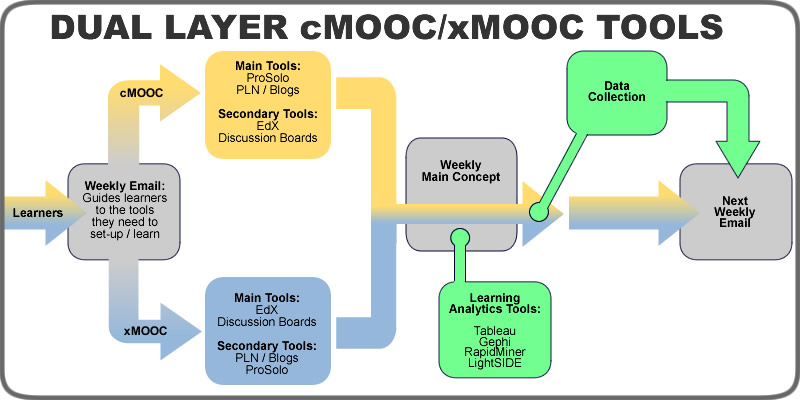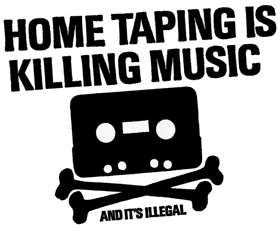One of the bigger struggles with modern day education is tool selection. There are so many good tools that do such similar things that everyone from instructors to CIOs are trying to figure out the secret formula for how many are too few to offer and how many are too many to manage. Some schools apply the “all your eggs in one basket” approach, forcing everything into one mega tool like Blackboard. Others advocate no restrictions, so that learners will be faced with so many tools that they get lost and confused.
Having all your eggs in one basket is nice from a bottom line perspective, but not very realistic for the world we live in since one instrument virtuoso are less in demand. However, Putting too many options in one course can overwhelm everyone from the instructor to the students to the support staff to, well… everyone with a hand in the game. A balance needs to be struck so that your diverse collection of instruments works together as a symphony but avoids the chaos of cacophony.
As we are looking at the dual layer MOOC design, the number of tools we would like to use is also ballooning. Some have been around for a while, some are newer, others are being tested out in this course. But they all seem to play a vital role, so how do we get the right amount that doesn’t overwhelm the students, but still gives them freedom to use what is most meaningful to them?
We could easily just say that all students will use Tableau, WordPress, and EdX for everything…. but that may not end up being what they will use after the class if over, and therefore end up rather useless to them.
We could also just as easily list a ton of tools and link to tutorials, but that would overwhelm many students and encourage more to drop out.
The solution is probably somewhere in the middle – where we offer enough tools to get everything accomplished in the course (assuring, of course, that we are focusing on teaching how to accomplish certain tasks over just focusing on the software) while helping learners to focus in on the tools they need at that given moment.
This is where Nicolas Cage and National Treasure comes in. Cage’s character is trying to use multiple tools to crack a code to find a treasure, basically. But in one scene there are so many possibilities out there that the clue seemed like useless blabber. Fast forward a few scenes and Cage’s figures out that the pair of older glasses would change what he saw on the piece of paper as he changed lenses:

Learners in the multiple pathways/dual layer MOOC will be changing technology filters as they go through the course to accomplish different tasks. There will be many more “lenses” than in the glasses pictured above, each one helping them see a different aspect of learning analytics. Our mission is to organize and tie the various technology filters together in a seamless fashion.
It would almost be nice if we could embed an UrbanSpoon slot-machine like app into the weekly/daily email communication. Learners select the layer they are in (xMOOC or cMOOC), the analytics tool for the week (Tableau, Gephi, RapidMiner, or LightSIDE), and the activity they are working on and they get a custom set of instructions for the week.

Probably a bit beyond what we have time for, but our design will need to help learners focus on just the tools that they need for the time being.
In a general sense, the weekly flow of tools could look something like this:
Learners would receive the weekly update which guides them to the tools they need to focus on (even though all tools can be used as secondary if needed). The learners then use these tools to go through the zone of proximal development (ZPD) surrounding the weekly main concept. The learning analytics tools are a part of the support for traversing the ZPD. Data collection tools will collect data to guide the next weekly email, as well as student work to highlight in the same email. These weekly (or maybe even daily) communication pieces are important in keeping students in different pathways aware of everything that is happening across the class, and will hopefully even draw some into trying different pathways.
Of course, this is a simplistic look at the process. Or maybe more of a road map for design. The time consuming part will be in building a unified user experience. I’m a fan of the way ds106 created a handbook for this purpose – kind of a combination how-to and FAQ space complete with quick start guide even. They cracked the code for turning their particularly large set of lenses / tools into a symphony quite nicely, and hopefully we can do the same.
(Note: ProSolo is a toll in development that, for lack of better words, serves as a place to collect various streams of content that learners create in their own space. I have been watching the developments with Known that Jim Groom has blogged about, and I like where they are going with that. ProSolo seems to have some similarities with Known on the hub side of things. I’m not sure whether it will receive input from a POSSE (Publish (on your) Own Site, Syndicate Elsewhere) service.)
Matt is currently an Instructional Designer II at Orbis Education and a Part-Time Instructor at the University of Texas Rio Grande Valley. Previously he worked as a Learning Innovation Researcher with the UT Arlington LINK Research Lab. His work focuses on learning theory, Heutagogy, and learner agency. Matt holds a Ph.D. in Learning Technologies from the University of North Texas, a Master of Education in Educational Technology from UT Brownsville, and a Bachelors of Science in Education from Baylor University. His research interests include instructional design, learning pathways, sociocultural theory, heutagogy, virtual reality, and open networked learning. He has a background in instructional design and teaching at both the secondary and university levels and has been an active blogger and conference presenter. He also enjoys networking and collaborative efforts involving faculty, students, administration, and anyone involved in the education process.

